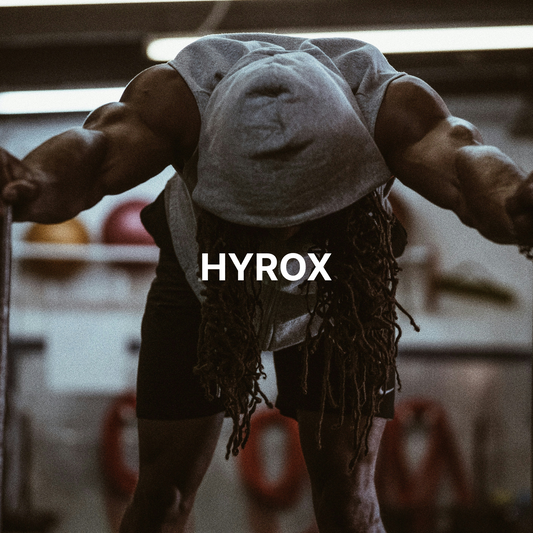
How Strength and Endurance Training Together Can Extend Your Life: Insights from New Research
In the pursuit of fitness, many athletes focus exclusively on strength or endurance. But what if the key to longevity isn’t choosing one over the other, but combining them? New research from the Harvard T.H. Chan School of Public Health highlights how integrating moderate (MPA) and vigorous physical activity (VPA)—a hallmark of hybrid training—significantly reduces all-cause and cardiovascular mortality.
The Research: What We Learned About Activity and Longevity

The study analyzed 30 years of data from over 116,000 adults to assess how different activity levels affect mortality risk. Here’s what they found:
1. Moderate Physical Activity (MPA) (e.g., walking, light cycling):
• Performing 150–300 minutes per week reduced all-cause mortality by 20–25%.
• Increasing MPA to 300–600 minutes per week further reduced mortality by up to 31%.
2. Vigorous Physical Activity (VPA) (e.g., running, HIIT, heavy cycling):
• Engaging in 75–150 minutes per week lowered all-cause mortality by 19% and cardiovascular mortality by 31%.
• Doubling this to 150–300 minutes offered additional benefits, reducing mortality by up to 23%.
3. Combining MPA and VPA:
• Athletes combining moderate and vigorous activity levels (e.g., hybrid training) achieved maximum mortality reduction (35–42%), confirming the complementary benefits of strength and endurance training.
Why Hybrid Training is Ideal for Longevity
Hybrid training combines the best of both worlds: the metabolic and cardiovascular benefits of endurance training with the musculoskeletal advantages of strength work. According to the research, this dual approach enhances:
• Cardiovascular Health: VPA improves VO2 max and heart efficiency, while MPA reduces inflammation and blood pressure. Together, they create a heart-healthy synergy.
• Metabolic Flexibility: Strength training improves insulin sensitivity and muscle function, while endurance activities boost fat metabolism.
• Long-Term Sustainability: By alternating high-intensity sessions with moderate activity, hybrid athletes can avoid burnout and promote recovery, critical for long-term adherence.
Key Takeaways for Hybrid Athletes
1. Train Smarter, Not Harder
The study highlights that more isn’t always better. Engaging in 150–300 minutes of VPA or 300–600 minutes of MPA per week is sufficient to maximize longevity benefits.
2. Balance is Key
Hybrid athletes should aim for a mix of:
• VPA Sessions: HIIT, sprint intervals, or long runs.
• MPA Sessions: Zone 2 cardio, yoga, or active recovery days.
3. Focus on Consistency
The benefits of physical activity compound over decades. Regularly engaging in hybrid training ensures that both strength and endurance are maintained, reducing age-related declines in fitness and health.
Building Longevity-Focused Hybrid Programs
To integrate the insights from this research into your routine, consider:
Weekly Plan:
• 2–3 days of strength training (including bodyweight or resistance exercises).
• 2–3 days of endurance training (Zone 2 sessions, tempo runs, or cycling).
• 1 active recovery day focusing on flexibility and light movement.
Intensity Guidelines:
• Incorporate MPA on “off” days to boost recovery and maintain movement.
• Use VPA strategically for high-effort days to maximize cardiovascular benefits.
Progress Tracking:
• Monitor both duration and intensity to ensure you meet the recommended activity levels (MPA: 300–600 minutes, VPA: 150–300 minutes).
Conclusion: Strength and Endurance for a Longer Life
The findings from this groundbreaking research affirm what hybrid athletes already know: balance is the key to peak performance and long-term health. By integrating both strength and endurance training into your weekly routine, you’re not just building a fitter body—you’re creating a foundation for longevity.
Whether you’re training for a triathlon, a marathon, or simply aiming to stay active as you age, the science is clear: move often, train smart, and enjoy a longer, healthier life.
Ready to get started? Explore our science-backed hybrid training programs here and take the first step toward a stronger, longer life.



